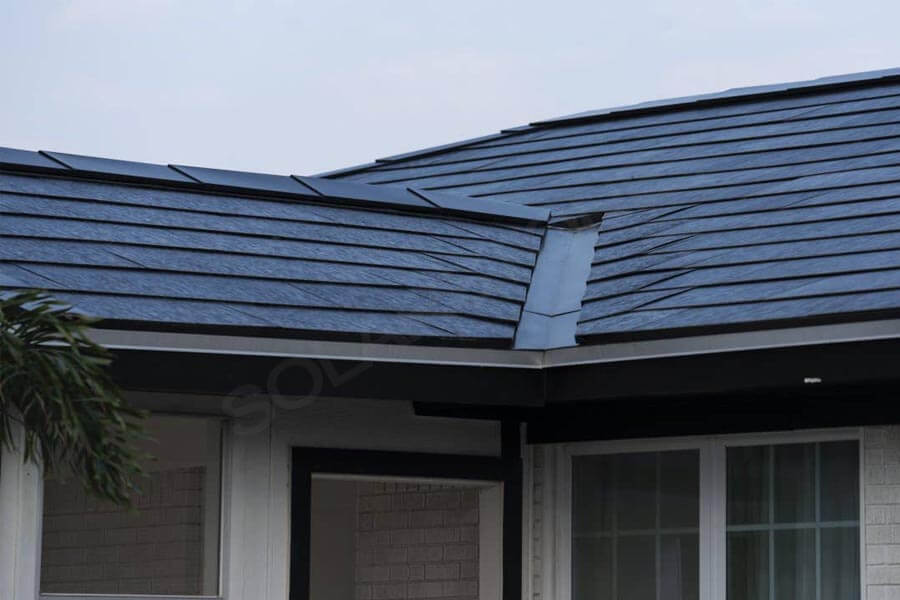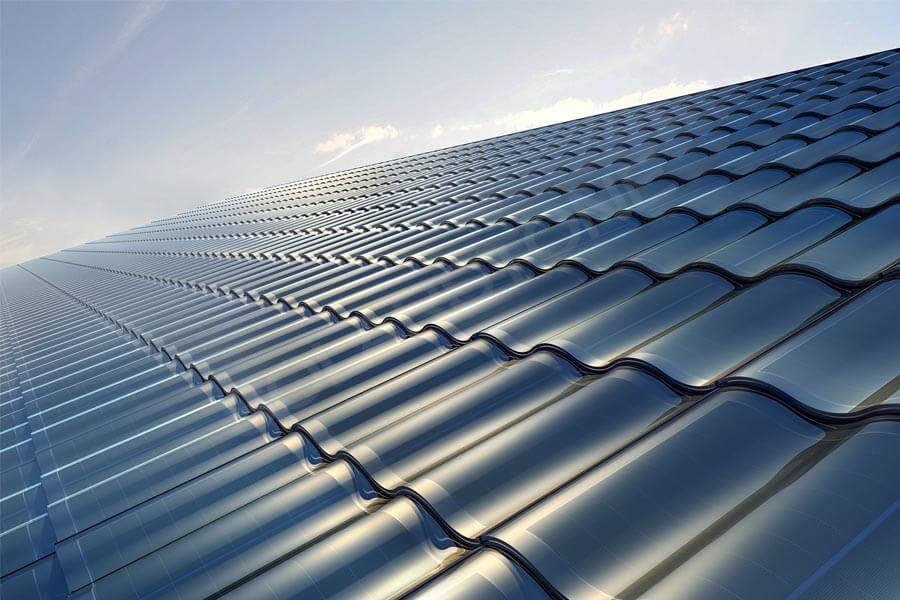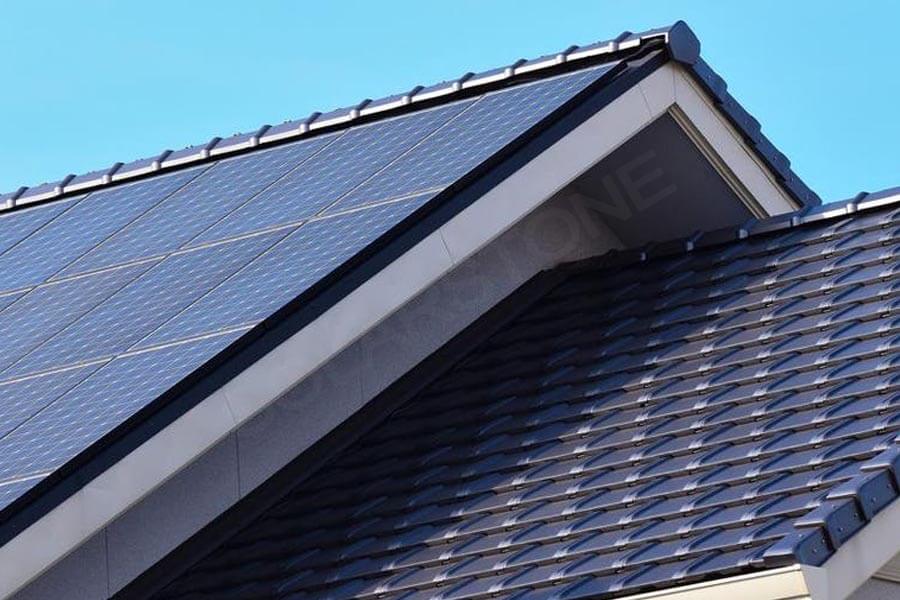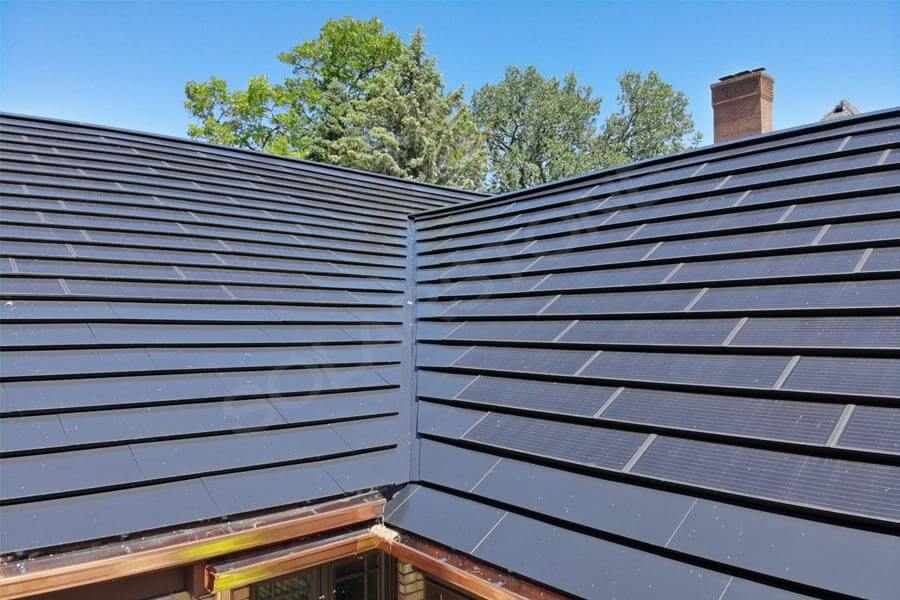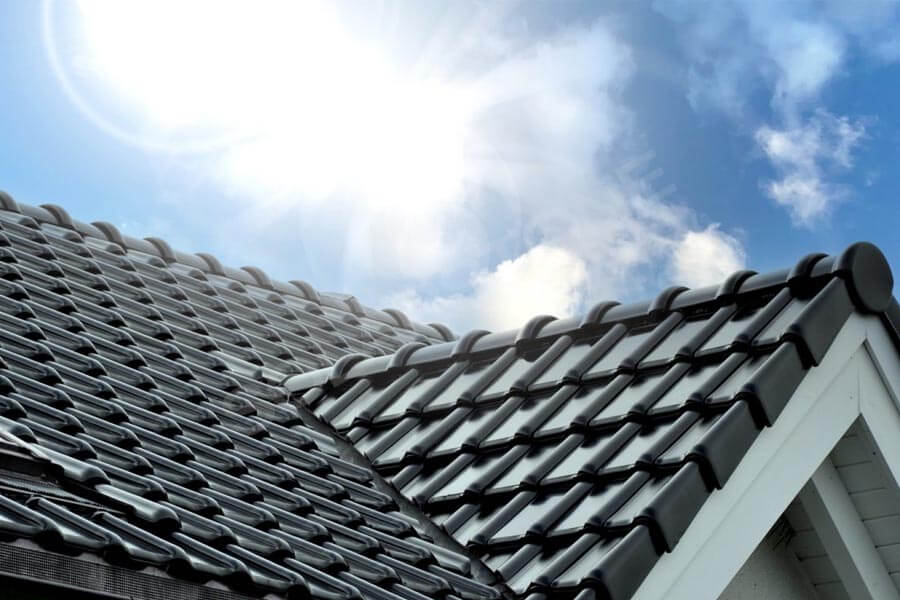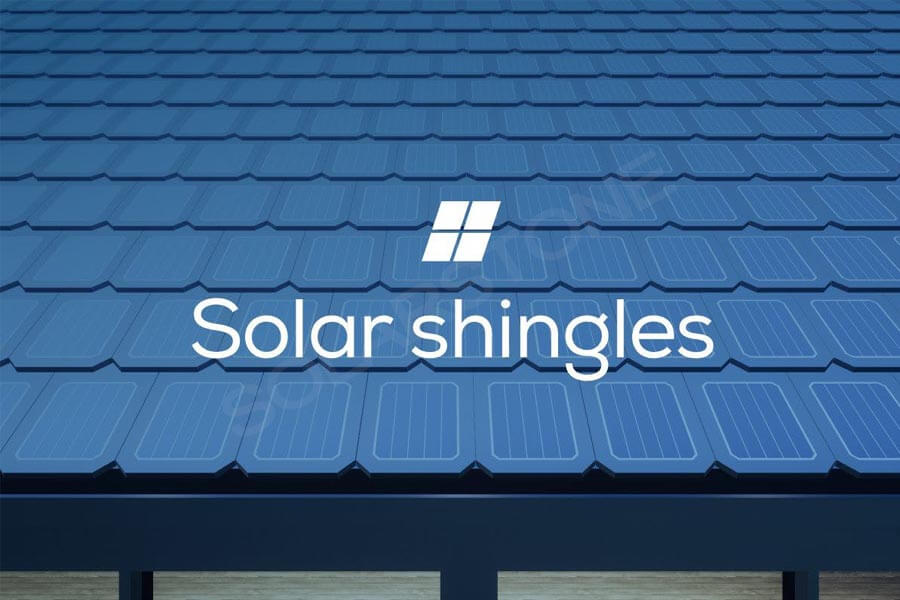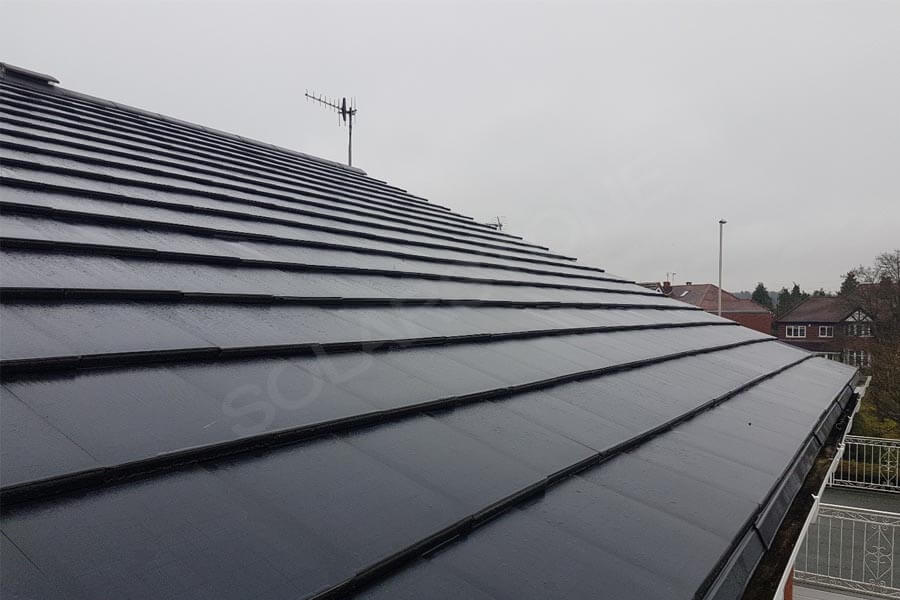Utilizing solar energy is not only beneficial for the environment, but also for your wallet. Although roof panels are often thought of, solar tiles are another option for homeowners seeking to add value to their property.
Solar tiles or solar roof tiles are made of thin photovoltaic (PV) panels that can cover or replace existing tiles on the roof. They absorb sunlight and convert it into electrical energy.
For example, by relying on this energy source instead of electricity, homeowners will save on monthly bills and ultimately recover their initial investment.
Like regular roof tiles, solar tiles can protect your house from weather and other factors. These photovoltaic tiles not only save energy, but also provide a more attractive aesthetic for homes compared to the large and bulky panels typically associated with solar energy.
The working method of solar tiles is similar to that of solar panels – they both absorb sunlight and convert light energy into thermal or electrical energy. However, when determining your home’s solar energy needs, you should understand some important differences:
(1) Dimensions
The size of solar tiles is roughly the same as that of traditional roof tiles, with an average size of approximately 12 inches wide by 86 inches long and a weight of approximately 13 pounds per square foot. The thickness of thin ceramic tiles is less than one inch. A typical solar roof installation requires approximately 350 tiles.
(2) Materials
Solar tiles are usually made of copper indium gallium selenium, which makes them so flexible and thin. This semiconductor is an ideal material because it has high conversion efficiency, averaging around 10% to 12%.
On the contrary, some photovoltaic watts use monocrystalline silicon, which is also used to manufacture computer chips. Although these are more expensive, they are worth the money because they have higher efficiency, around 15% to 20%.
(3) Output
As the main goal is to reduce energy costs, this is the main consideration factor for solar installation. Most photovoltaic tiles generate power ranging from 13 to 63 watts. The number of tiles in typical household roof installation can reduce water and electricity costs by 40% to 70%;
By adding more tiles, you can increase energy output. Although both solar tiles and solar panels convert sunlight into energy, there are many differences that can help you make a decision between these two options:
(4) Appearance
Due to the direct integration of solar tiles into roof materials, such as concrete or asphalt, many people prefer this aesthetic over the large black panels attached to the roof. Generally speaking, solar tiles are more fashionable than bulky solar panels.
(5) Service life
The service life of solar panels and photovoltaic watts is very long, usually reaching over 20 years. However, the lifespan of solar tiles varies depending on the manufacturer and installation. The warranty is also different;
When purchasing solar tiles, it is important to pay attention to the differences between power supply warranties. According to its production situation, the warranty for solar tiles can last for decades, while the durability warranty covering the tile itself can span the entire service life of the house.
(6) Efficiency
Due to various reasons, solar tiles outperform panels in terms of efficiency. Although the solar panels can be adjusted as needed to achieve the optimal angle for capturing sunlight, the tiles remain in the same position as they were initially installed.
You can always add more tiles on the roof to utilize more energy, but like all home improvement projects, more materials mean more money.
(7) Installation
Installing solar tiles may take up to a week – provided that your existing roof is in good condition. If you are building or remaking a roof before adding solar tiles, it may take longer.
(8) Durability
Compared to panels, solar tiles have one major advantage: they are more durable. Unlike panels located on the roof, solar roof tiles are actually a part of the roof. Therefore, they are more elastic and can withstand harsh weather conditions and falling debris.
In addition, solar tiles have fire resistance, which is a characteristic that solar panels do not possess. However, it should be noted that the risk of solar panel fires is very low.
(9) Cost
The price of solar tiles may be higher, depending on how many square feet you need to cover and which type you want to obtain. It is important to understand your budget before choosing a solar tile project.
Due to the amount of materials required for installation, solar tiles typically cost more than solar panels.
The average price of solar roof tiles ranges from $15000 to $20000, and the final cost of solar tiles depends on the size of the roof, the energy needs of your household, and the manufacturer and installer of the tiles you choose.
Advantages and Disadvantages of Solar Photovoltaic tiles
Advantages:
- Photovoltaic tiles have a more fashionable and attractive aesthetic. They are particularly suitable for concrete and asphalt roofs.
- They are weather resistant and durable.
- They are easier to maintain than solar panels.
- If you are building new roofs, they are cost-effective
Disadvantages:
- Although solar panels have been in existence for a long time, solar tiles are still very young in comparison. Therefore, not every solar energy manufacturer provides them.
- This technology is also constantly evolving. Not all existing roofs are suitable for installing solar tiles – you may need to rebuild the entire roof.
- They are more expensive than solar panels.
- Their current styles and colors are limited.


